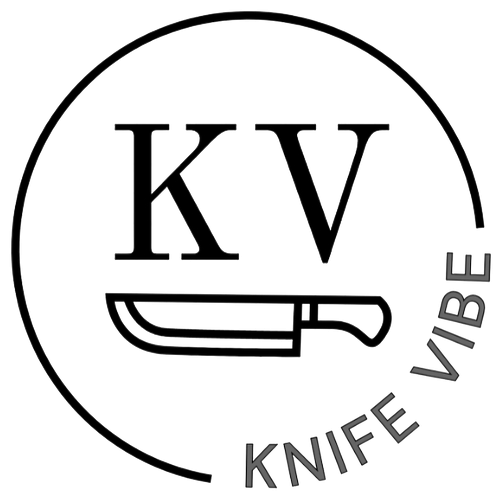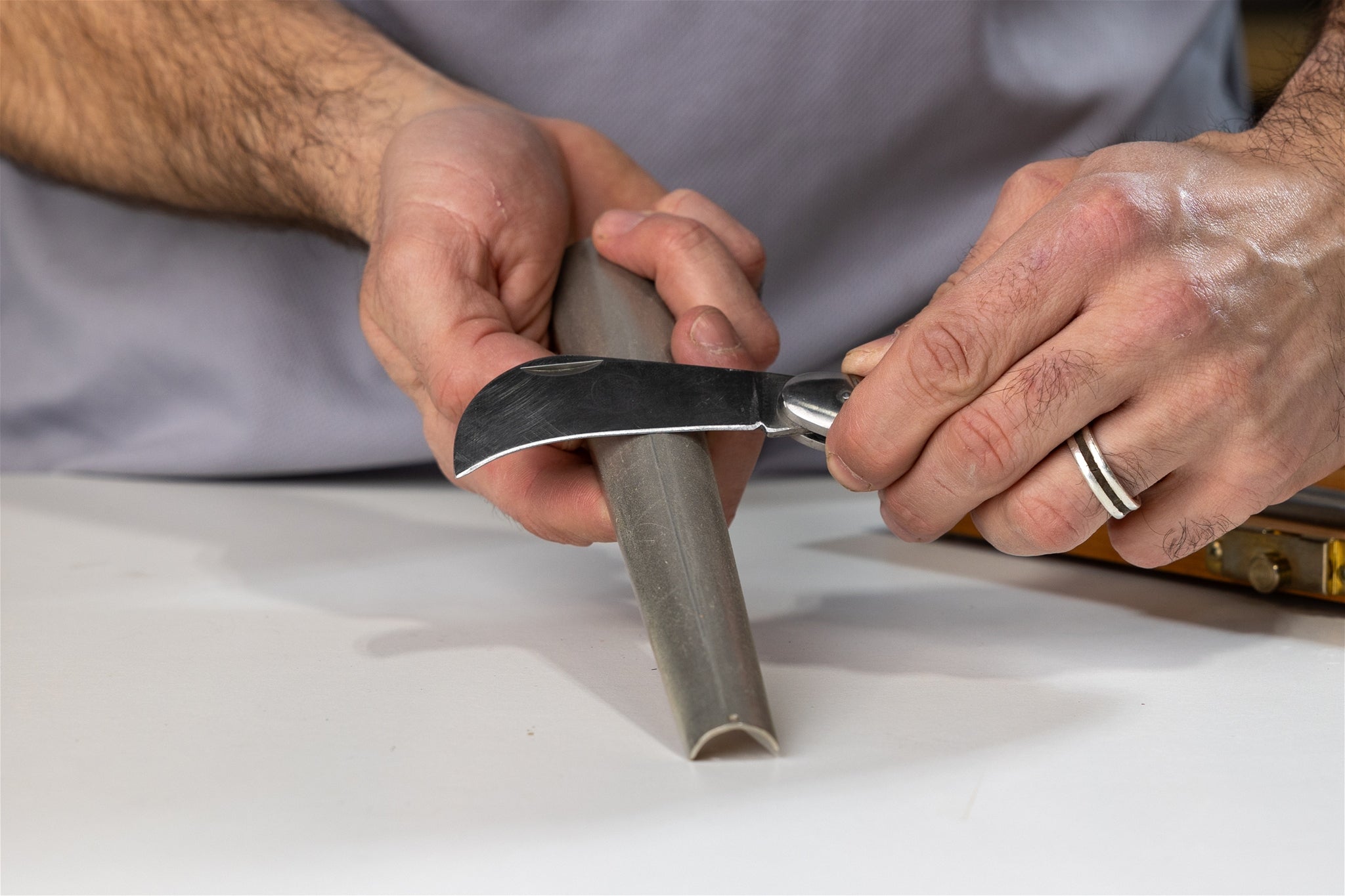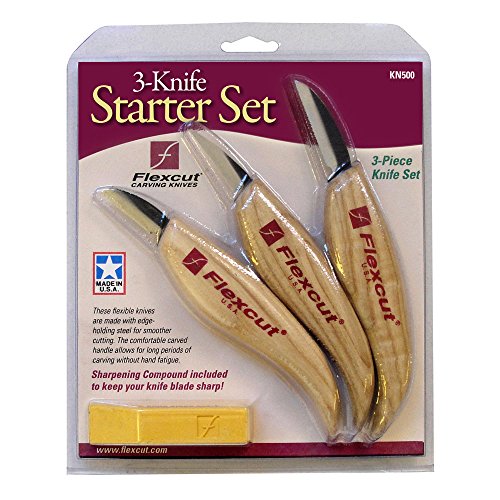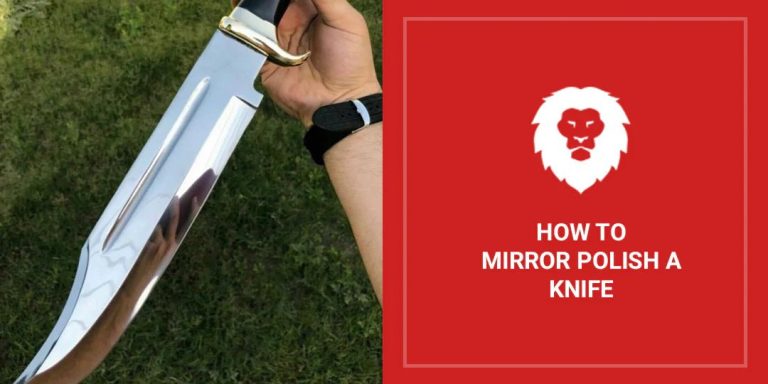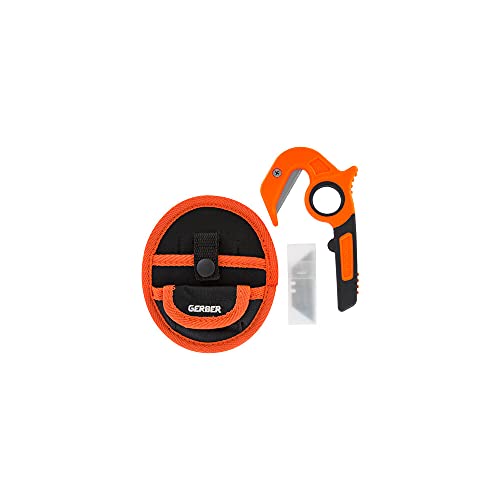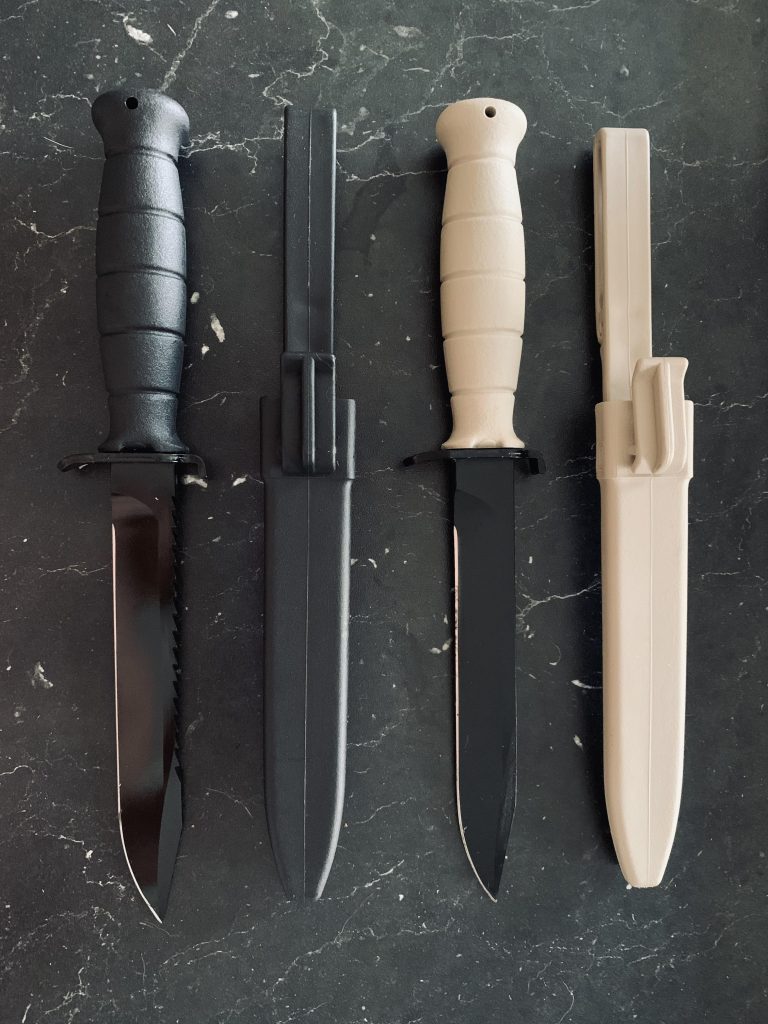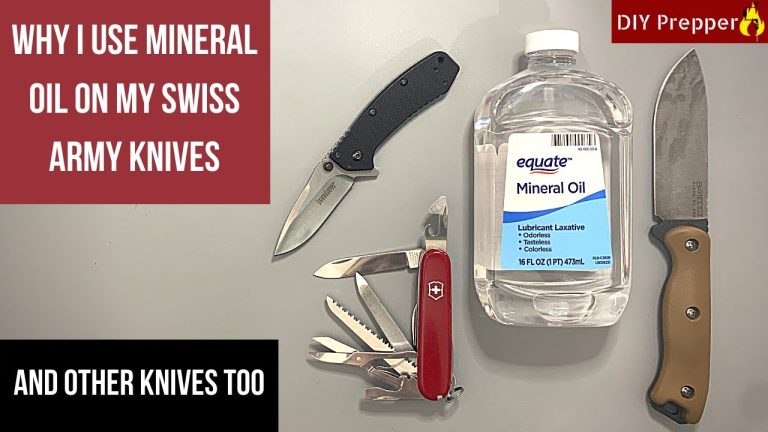How to Sharpen a Hawkbill Knife: Expert Tips and Techniques
Sharpening a hawkbill knife can seem tricky. Its unique shape requires special care.
But don’t worry, it’s manageable with the right steps. The hawkbill knife, known for its curved blade, is a favorite among gardeners, electricians, and craftsmen. Its hooked design makes it perfect for cutting through tough materials. But maintaining its sharpness is crucial for efficiency and safety.
In this guide, you’ll learn the best techniques to sharpen your hawkbill knife at home. Whether you’re a seasoned pro or a beginner, these tips will help you keep your blade in top condition. Ready to get started? Let’s dive into the process of sharpening a hawkbill knife effectively.

Credit: www.reddit.com
Introduction To Hawkbill Knives
The hawkbill knife is a unique tool with a distinct, curved blade. It resembles a hawk’s beak, hence the name. This knife is known for its precision and control in various tasks.
Unique Features
The hawkbill knife stands out due to its curved blade. This curve allows for controlled cuts, making it ideal for slicing through materials. The blade is often sharp and pointed, providing excellent piercing ability. The handle is usually designed for a firm grip, ensuring safety during use.
| Feature | Description |
|---|---|
| Curved Blade | Allows for precise and controlled cuts |
| Sharp Point | Ideal for piercing materials |
| Ergonomic Handle | Ensures a secure and comfortable grip |
Common Uses
The hawkbill knife is versatile and can be used in various tasks. Here are some common uses:
- Gardening: Excellent for pruning and cutting stems.
- Fishing: Ideal for cutting lines and cleaning fish.
- Carpentry: Useful for shaping wood and detailed work.
- Electrical Work: Perfect for stripping wires.
Its unique design makes it a favorite among professionals and hobbyists alike.
Example HTML for a simple gardening task with a hawkbill knife
Use the curved blade to prune small branches and stems.
Choosing The Right Tools
Choosing the right tools for sharpening a hawkbill knife is crucial. The unique curved blade of a hawkbill knife requires specific tools. Using the right tools will ensure a sharp and efficient edge. Let’s explore the essential tools and optional accessories for this task.
Essential Sharpening Tools
First, a quality sharpening stone is necessary. Whetstones or diamond stones are great options. These stones come in various grits. Coarse grits remove nicks, while finer grits refine the edge. A sharpening guide can help maintain the correct angle. This is vital for the curved blade of a hawkbill knife.
Another essential tool is a ceramic rod. It helps polish the edge. Ceramic rods are gentle and suitable for maintaining the knife’s sharpness. Use it with light pressure to avoid damaging the blade.
Optional Accessories
Optional accessories can enhance the sharpening process. A honing oil or water can be used with whetstones. This reduces friction and prevents metal particles from clogging the stone. It ensures a smooth sharpening experience.
A leather strop is another useful accessory. It helps polish and refine the blade. Apply a small amount of stropping compound for better results. This step can make the knife razor-sharp.
A magnifying glass can help inspect the edge. It ensures that the blade is evenly sharpened. This is especially useful for beginners.
Investing in a knife sharpening kit can be beneficial. These kits often include various stones, guides, and accessories. They offer a comprehensive solution for maintaining your hawkbill knife.
Preparing Your Work Area
Preparing your work area is crucial for sharpening a hawkbill knife. A well-organized and safe space ensures you can work efficiently and prevent accidents. In this section, we will discuss key steps to prepare your workspace.
Safety Measures
First, focus on safety. Wear protective gloves and safety goggles. This will protect your hands and eyes from sharp edges and debris. Ensure your workspace is well-lit. A bright area helps you see the blade clearly. Keep a first aid kit nearby. It’s better to be prepared for minor cuts or injuries.
Organizing Your Space
Next, organize your space. Clear away any unnecessary items from your workbench. This prevents distractions and clutter. Lay down a non-slip mat. It keeps your tools and knife steady while working. Gather all necessary tools before you start. This might include a sharpening stone, honing oil, and a clean cloth. Place these items within easy reach. It saves time and keeps you focused.
Initial Inspection
Inspect the blade for nicks or damage before sharpening your hawkbill knife. Check for any rust or corrosion. This helps ensure a smooth sharpening process.
Before sharpening your hawkbill knife, perform an initial inspection. This step ensures the knife is ready for sharpening. It also helps identify any issues that may affect the sharpening process. Two key tasks in this inspection are checking for damage and assessing sharpness.Checking For Damage
Examine the blade carefully. Look for chips, cracks, or bends. Minor damage can be fixed during sharpening. Severe damage may need professional repair. Pay close attention to the edge. Ensure it is not too worn down.Assessing Sharpness
Test the blade’s sharpness. Use a piece of paper. Gently slice through it. A sharp blade cuts cleanly. A dull blade tears the paper. This test helps gauge how much sharpening is needed. Note how the blade feels. A dull blade may need more work. “`Sharpening Techniques
Sharpening a hawkbill knife requires special techniques due to its unique curved blade. Ensuring your knife remains sharp enhances its cutting efficiency and safety. Below, we explore two effective sharpening techniques: the honing stone method and using a sharpening rod.
Honing Stone Method
The honing stone method is a traditional way to sharpen a hawkbill knife. Follow these steps for effective sharpening:
- Soak the honing stone in water for 10 minutes.
- Hold the knife at a 20-degree angle against the stone.
- Move the blade in a circular motion along the stone.
- Ensure you cover the entire curved edge of the blade.
- Repeat the process on the other side of the blade.
- Rinse and dry the knife after sharpening.
Using a honing stone helps maintain the knife’s sharpness and shape. It is a reliable method for regular maintenance.
Using A Sharpening Rod
The sharpening rod method is ideal for quick touch-ups and precise sharpening. Here’s how you can use a sharpening rod effectively:
- Hold the rod vertically on a stable surface.
- Position the knife at a 20-degree angle to the rod.
- Draw the blade down the rod, following the curve.
- Alternate sides to ensure even sharpening.
- Repeat the process until the blade is sharp.
- Wipe the blade clean after sharpening.
Using a sharpening rod offers a quick and efficient way to maintain your hawkbill knife’s sharpness. It is especially useful for on-the-go sharpening.
Both methods are effective for keeping your hawkbill knife in optimal condition. Choose the one that fits your needs and skill level.

Credit: www.youtube.com
Maintaining The Edge
Maintaining the edge of your hawkbill knife ensures it stays sharp and effective. Regular care and proper storage play key roles in keeping the blade in top condition. Let’s dive into these practices.
Regular Honing
Honing your hawkbill knife regularly keeps the edge sharp. Use a ceramic rod for this purpose. Hold the knife at a 20-degree angle. Gently run the blade along the rod. Do this on both sides of the blade. Repeat several times. This process realigns the edge, making it sharper.
Proper Storage
Proper storage is crucial for maintaining the edge of your knife. Always clean the blade before storing it. Keep the knife in a sheath or a drawer with a blade guard. Avoid tossing it in a drawer with other utensils. This can dull or damage the edge. Store it in a dry place to prevent rust.
Common Mistakes
Sharpening a hawkbill knife can be tricky. Many people make common mistakes. These errors can dull the blade or damage it. Let’s explore some of these mistakes and how to avoid them.
Avoiding Over-sharpening
Over-sharpening is a frequent mistake. People often think more sharpening means a sharper blade. This is not true. Over-sharpening can thin the blade too much. A thin blade is prone to chipping and breaking.
To avoid over-sharpening, check the blade often. Stop sharpening once you achieve a keen edge. Less is more in this case. A few strokes can make a big difference.
Recognizing Incorrect Angles
The angle at which you sharpen the knife is crucial. Many people use the wrong angle. A wrong angle can make the blade dull. It can also cause uneven wear.
Hold the knife at the correct angle. For a hawkbill knife, a 20-degree angle works well. Consistent angles ensure an even and sharp edge. Use a guide if needed to maintain the angle.

Credit: www.sharpeningsupplies.com
Advanced Tips
Sharpening a hawkbill knife can be tricky. Especially if you’re new to knife care. But with some advanced tips, you can achieve a razor-sharp edge.
Sharpening Serrations
Serrations require special attention. Use a tapered ceramic rod for this. Fit the rod into each serration individually. Gently move it back and forth. Repeat until the serrations are sharp.
Keep the rod at the same angle as the serration. This ensures a consistent edge. Don’t rush. Patience is key to achieving sharp serrations. Check your progress often. This helps to avoid over-sharpening.
Using A Leather Strop
After sharpening, use a leather strop. This removes any burrs and polishes the edge. Hold the knife at a consistent angle. Drag it away from the edge, not toward it. This prevents cutting into the strop.
Make slow, deliberate strokes. Alternate sides to keep the edge even. Strop each side ten to fifteen times. This should give your hawkbill knife a mirror-like finish.
Frequently Asked Questions
How Do You Sharpen A Hawkbill Knife?
Sharpen a hawkbill knife using a round sharpening rod. Follow the blade’s curve. Maintain a consistent angle for best results.
What Tools Are Needed To Sharpen A Hawkbill Knife?
You’ll need a round sharpening rod or ceramic rod. A leather strop is also helpful for a fine edge.
How Often Should I Sharpen My Hawkbill Knife?
Sharpen your hawkbill knife when it becomes dull. Frequency depends on usage. For regular use, sharpen every few weeks.
Can I Use A Whetstone To Sharpen A Hawkbill Knife?
A whetstone is not ideal for hawkbill knives. The curved blade requires a round sharpening rod for proper edge maintenance.
Conclusion
Sharpening a hawkbill knife is simple with practice. Follow the steps carefully. Safety first; always use protective gear. Use a proper sharpening tool to maintain the blade’s curve. Regular maintenance keeps your knife sharp and efficient. Practice makes perfect, so don’t rush the process.
Enjoy the satisfaction of a well-sharpened knife. Happy sharpening!
